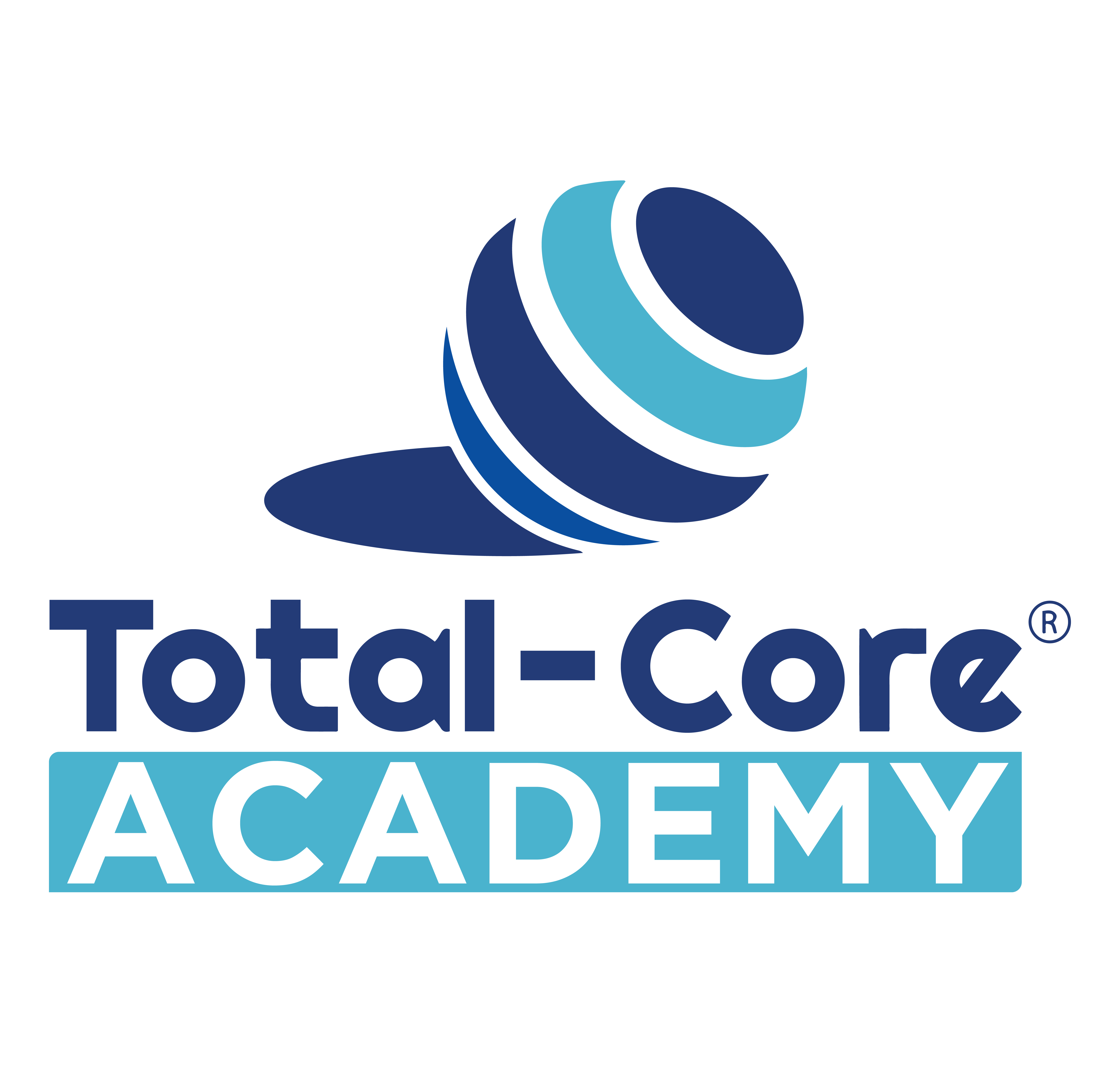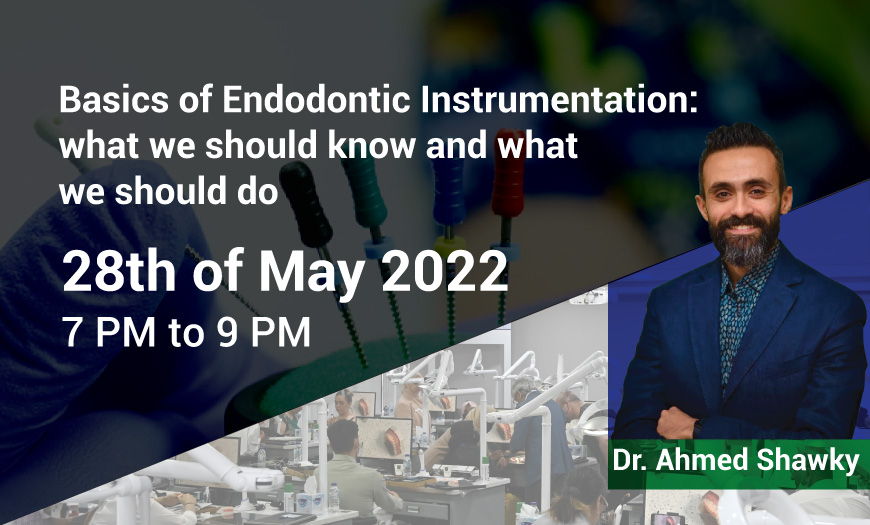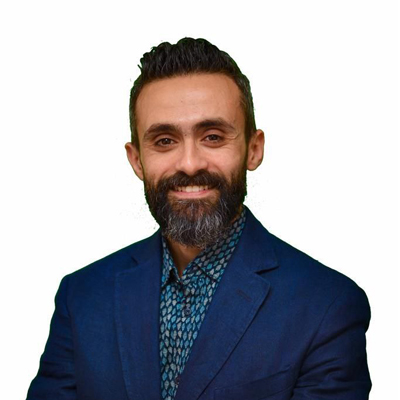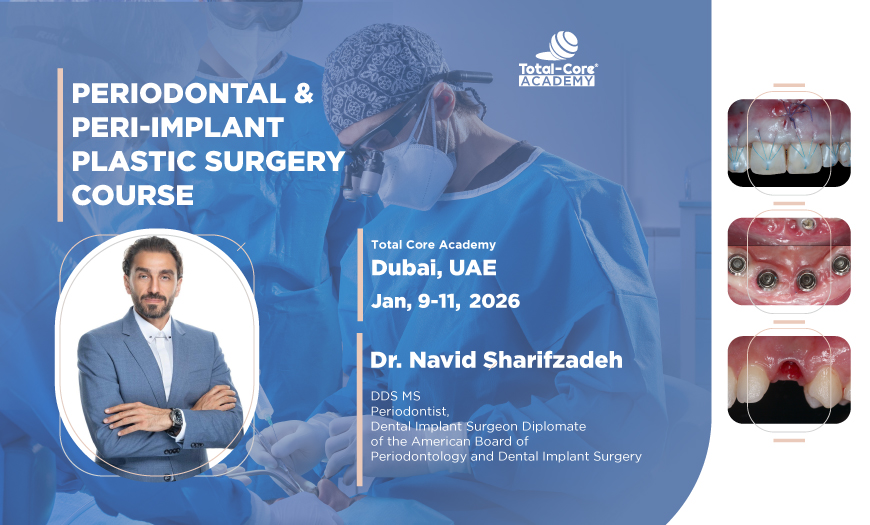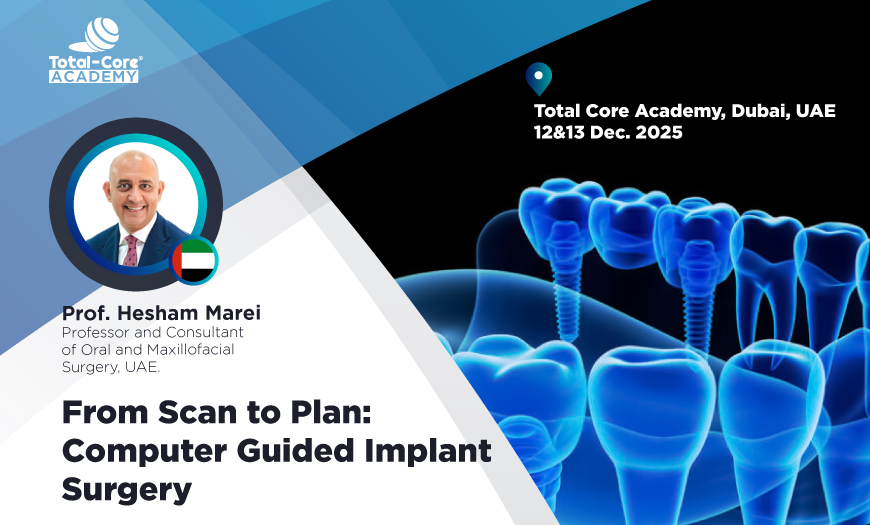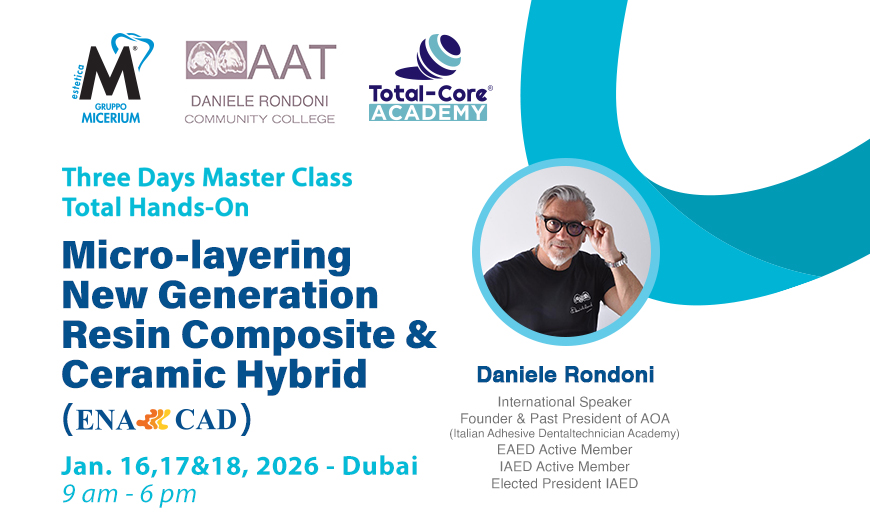Basics of Endodontic Instrumentation: What we should know and what we should do Expired
Basics of Endodontic Instrumentation: What we should know and what we should do
28th of May 2022
Total Core Academy, UAE
Dr. Ahmed Shawky
Key Learning Points:
The Rationale for shaping procedures
Working length determination (how to get a reliable reading from the apex locator/ factors affecting the accuracy of the apex locator)
Glide path preparation
Triad for instrument selection: how to correlate Design, Metallurgy, and kinematics for safe shaping
Manual-less shaping: Is it possible?
StyleItaliano
Endodontics
Silver
Certificated Member
